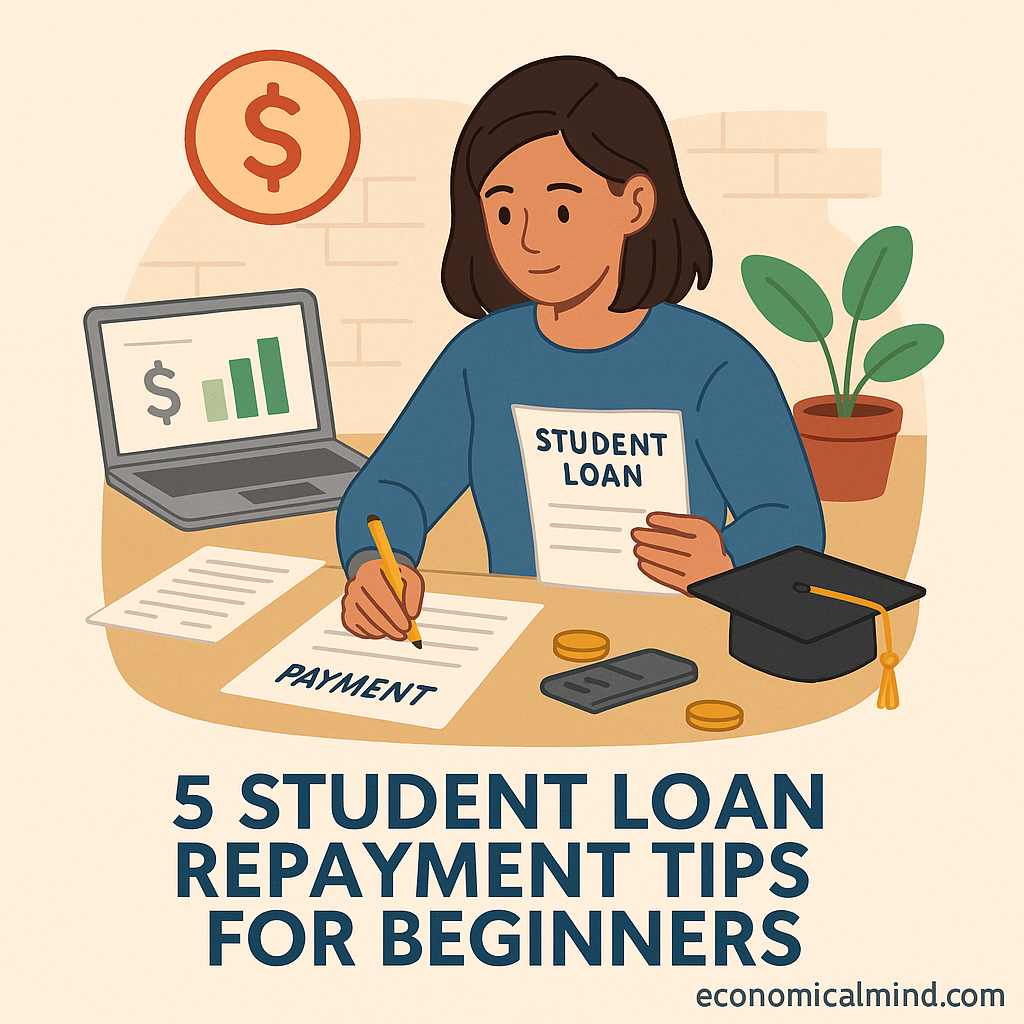
Paying off student loans can feel overwhelming, but with a clear plan and consistent effort, you can regain control of your finances and build a debt-free future. Whether you’re just graduating or finally ready to tackle your balance, these student loan repayment tips will help you start strong and stay motivated.
1. Know Exactly What You Owe
Before making a plan, take inventory of your loans. Write down:
- The total amount you owe
- Interest rates for each loan
- Minimum monthly payments
- Whether each loan is federal or private
Federal loans often offer more flexible repayment options, while private loans may have higher rates or fewer protections.
Knowing your full financial picture helps you prioritize which loans to pay down first.
2. Choose the Right Repayment Plan
If you have federal student loans, you can select from several repayment options based on your income and goals:
- Standard Repayment Plan: Fixed payments over 10 years — fastest payoff, less interest.
- Income-Driven Repayment (IDR): Payments adjust based on income, with possible forgiveness after 20–25 years.
- Graduated Repayment Plan: Payments start smaller and increase over time as your income grows.
If you have private loans, contact your lender to discuss any refinancing or flexible repayment options available.
Choosing the right plan can make your payments more manageable and reduce stress.
3. Make Extra Payments When You Can
Whenever possible, pay more than the minimum. Even an extra $50–$100 per month can reduce your balance and save you thousands in interest over the life of the loan.
To make sure the extra payment helps:
- Instruct your servicer to apply it to the principal balance (not future payments).
- Avoid skipping months, even when you’re ahead — consistency builds momentum.
Small, consistent overpayments make a huge difference over time.
4. Consider Refinancing or Consolidation
If you have multiple loans or high-interest rates, refinancing or consolidating might simplify your payments and lower your costs.
- Consolidation (for federal loans): Combines loans into one payment, often with a weighted-average interest rate.
- Refinancing (for private or mixed loans): Takes out a new loan with a private lender, ideally at a lower rate.
However, be careful: refinancing federal loans into private ones means losing access to forgiveness programs and federal protections. Compare rates and terms carefully before deciding.
5. Set Up Automatic Payments
Most loan servicers offer a small interest rate reduction (usually 0.25%) if you enroll in auto-pay.
Automatic payments ensure you never miss a due date — protecting your credit score and keeping your repayment on track.
Even better, automate transfers to a separate “loan payment” account so you’re always prepared when the payment hits.
Bonus Tip: Stay Eligible for Forgiveness and Assistance
If you work in public service, education, or nonprofit sectors, you may qualify for loan forgiveness programs like Public Service Loan Forgiveness (PSLF).
Make sure you:
- Submit employer certification forms annually
- Remain on an eligible repayment plan
- Stay consistent with qualifying payments
Also, keep an eye out for temporary forgiveness updates or government relief options — rules can change, and staying informed can save you thousands.
Final Thoughts
Repaying student loans takes patience, but every payment moves you closer to freedom.
By understanding your loans, choosing a smart repayment strategy, and automating your progress, you’ll transform debt from a burden into a structured, manageable plan.
Financial confidence comes from consistency — not perfection. The earlier you take control, the faster you’ll reach peace of mind.
